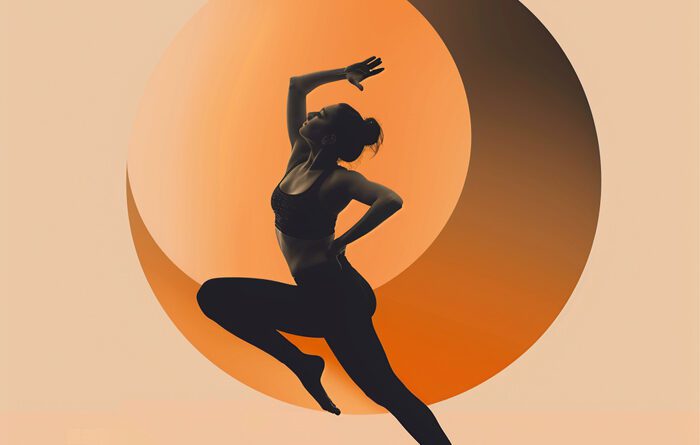In “A Guide to Finding Peace in Lotus Pose (Padmasana),” you’ll discover the key to serenity and tranquility through the practice of this iconic yoga posture. As a yoga instructor specializing in working with beginners, I understand the importance of simplicity and clarity when guiding individuals on their yoga journey. In this article, I’ll provide you with essential tips and insights to help you find inner peace while navigating the beautiful world of Padmasana. So, whether you’re a seasoned yogi or a curious beginner seeking solace in the heart of your practice, this guide is tailored towards unlocking the secrets of finding peace in Lotus Pose.
What is Lotus Pose?
Definition of Lotus Pose
Lotus Pose, also known as Padmasana in Sanskrit, is a seated yoga posture that is commonly used for meditation and deep relaxation. It is considered one of the most iconic and revered yoga poses, not only for its physical benefits but also for its ability to promote mental clarity and inner peace.
Physical Benefits of Lotus Pose
Lotus Pose offers numerous physical benefits. It helps to strengthen the core muscles, especially the abdominal muscles, which are responsible for maintaining a stable and upright posture. This can lead to improved posture and decreased lower back pain.
In addition, Lotus Pose opens up the hips and stretches the inner thighs, which can be particularly beneficial for individuals who spend long hours sitting or have tight hip muscles. This increased hip mobility can also enhance flexibility and help alleviate tension in the lower body.
Mental Benefits of Lotus Pose
Apart from its physical advantages, Lotus Pose is renowned for its profound mental benefits. This posture encourages a state of calm and tranquility, making it an ideal choice for practicing meditation and mindfulness. It helps to quiet the mind, release mental and emotional stress, and cultivate a sense of inner peace.
Lotus Pose also stimulates the parasympathetic nervous system, which is responsible for promoting relaxation and reducing the effects of stress on the body. By activating this relaxation response, Lotus Pose can help to lower blood pressure, reduce anxiety, and improve overall mental well-being.
Preparing for Lotus Pose
Physical Warm-up
Before attempting Lotus Pose, it is essential to warm up the body to prevent any potential injuries. Engaging in a light cardiovascular activity, such as brisk walking or gentle cycling, helps to increase blood flow and warm up the muscles.
Following the cardio warm-up, incorporating dynamic stretches for the lower back, hips, and legs is crucial. This can include movements such as gentle twists, hip circles, and forward folds to prepare the body for the deeper stretches and opening required in Lotus Pose.
Opening the Hips
Opening the hips is a crucial and necessary step in preparing for Lotus Pose. Tight hips can make it challenging to comfortably sit in the pose and may strain the knees. Incorporating hip-opening exercises, such as Pigeon Pose and Butterfly Pose, can help to gradually increase flexibility in the hip joints.
Stretching the Ankles
To ensure a safe and comfortable experience in Lotus Pose, it is vital to stretch and strengthen the ankle muscles. Ankle circles, ankle flexes and point exercises, as well as other ankle-specific stretches, can help improve ankle mobility and prevent discomfort or strain while in the pose.
Building Core Strength
A strong core is essential for maintaining an upright and stable posture in Lotus Pose. Incorporating core-strengthening exercises, such as Plank Pose, Boat Pose, and Leg Lifts, can help to build a solid foundation and support the body in this seated posture.
Getting into Lotus Pose
Step-by-step Instructions
To get into Lotus Pose, follow these simple step-by-step instructions:
- Start by sitting on the mat with your legs extended in front of you.
- Bend your right knee and bring your right foot towards your left hip crease.
- Gently lift your left leg and place your left foot on top of your right thigh, bringing your left ankle towards your right hip crease.
- Rest your hands on your knees or thighs, with your palms facing upward.
- Straighten your spine by lengthening your torso upward.
- Relax your shoulders and soften your facial muscles.
- Breathe deeply and hold the pose for as long as comfortable.
Modifications for Beginners
For beginners or individuals with tight hips or knees, Lotus Pose can be challenging. It is important to modify the pose to ensure a safe and comfortable experience. Here are a few modifications that can be made:
- Half Lotus Pose: Instead of crossing both legs, start with one foot resting on the opposite thigh while keeping the other foot extended on the mat.
- Elevating Hips: For individuals with tight hips, sitting on a folded blanket or cushion can alleviate pressure and make the pose more accessible.
- Using Props: Placing a yoga block or rolled-up blanket under the knees can provide support and help alleviate strain on the hips and ankles.
Common Mistakes to Avoid
When practicing Lotus Pose, it is important to be mindful of the following common mistakes and avoid them:
- Straining the Knees: Avoid forcing the knees to the ground if they are not ready. Allow the knees to naturally lower over time with consistent practice.
- Slouching the Spine: Remember to maintain an upright posture throughout the pose. Slouching can strain the lower back and affect the overall alignment of the body.
- Holding Tension in the Shoulders: Keep the shoulders relaxed and away from the ears. This will help prevent unnecessary tension and allow for a more comfortable and peaceful experience in the pose.
Finding Peace in Lotus Pose
Breathing Techniques
Breathing techniques, also known as pranayama, can be incorporated into Lotus Pose to deepen relaxation and enhance the meditative experience. One commonly practiced breathing technique during this pose is called “Lotus Breath” or “Padma Pranayama.”
To practice Lotus Breath:
- Begin in Lotus Pose, sitting comfortably with your eyes closed.
- Inhale slowly and deeply through your nose, allowing your belly to expand.
- Exhale fully and completely, drawing your belly button towards your spine.
- Continue this slow, deep breathing pattern, focusing on the steady rhythm of your breath.
Lotus Breath helps to calm the mind, reduce distractions, and enter a state of deep relaxation.
Meditation and Mindfulness
Lotus Pose is often used as a posture for meditation and mindfulness practices. By sitting in this grounded and stable position, it becomes easier to focus the mind and cultivate a sense of inner peace. During meditation in Lotus Pose, redirecting attention to the breath or a chosen mantra can help bring the mind back to the present moment.
Visualization and Affirmations
Visualization and affirmations can be powerful tools to enhance the feelings of peace and tranquility experienced in Lotus Pose. As you sit in the pose, visualize yourself surrounded by a warm and gentle light, releasing any tension or negativity. Repeat affirmations, such as “I am calm and at peace,” or “I am connected with my inner stillness,” to create a positive and peaceful mindset.
Maintaining Comfort in Lotus Pose
Using Props
Props can be used to enhance comfort and ensure proper alignment in Lotus Pose. Placing a cushion or folded blanket under the sitting bones can elevate the hips and reduce strain on the knees and ankles. Using a yoga block or bolster to support the hands or forearms can alleviate tension in the upper body and allow for a more relaxed posture.
Adjusting Alignment
Proper alignment is essential in Lotus Pose to avoid discomfort or potential strain on the joints. To ensure proper alignment:
- Sit evenly on both sitting bones, avoiding favoring one side of the body.
- Align the knees over the ankles, avoiding any excessive inward or outward rotation.
- Lengthen the spine and imagine a string pulling the crown of the head towards the ceiling.
- Relax the shoulders and draw them away from the ears.
- Ensure the chin is parallel to the floor, neither tilted upwards nor downwards.
By paying attention to alignment, you can maintain a comfortable and sustainable Lotus Pose.
Listening to Your Body
Listening to your body is crucial when practicing Lotus Pose. Each individual’s body is unique, and it is important to honor your own limits and avoid any pain or discomfort. If you experience any sharp or intense sensations, modify the pose or come out of it completely. Being present and attentive to your body’s signals will help you maintain comfort and minimize the risk of injury.
Tips for Progressing in Lotus Pose
Practice Consistently
Consistency is key when working towards mastering Lotus Pose. Regular and dedicated practice will gradually increase flexibility, open up the hips, and make the pose more accessible. Aim to incorporate Lotus Pose into your yoga routine at least a few times a week to see progress over time.
Gradual and Gentle Progression
When it comes to Lotus Pose, it is important to progress gradually and gently. Avoid forcing or rushing into the pose, as this can lead to strain or injury. Instead, allow your body to adapt and change at its own pace. Over time, you will notice increased ease and comfort in the pose.
Seeking Guidance and Support
If you are new to Lotus Pose or facing challenges, seeking guidance from a qualified yoga teacher can be incredibly beneficial. They can provide personalized instructions, modifications, and adjustments tailored to your specific needs. A teacher can also help ensure you are practicing the pose correctly and safely.
Common Challenges and Solutions
Tight Hips and Ankles
Tight hips and ankles are common challenges when attempting Lotus Pose. To address tight hips, consistently practicing hip-opening exercises, such as Pigeon Pose and Butterfly Pose, can gradually increase flexibility. For tight ankles, regularly performing ankle stretches and exercises can help improve mobility and reduce discomfort.
Knee Discomfort
If you experience discomfort or strain in the knees while practicing Lotus Pose, it is important to modify the pose or avoid it altogether. Place cushions or folded blankets under the knees for support, or choose a modification like Half Lotus Pose to alleviate pressure. If knee discomfort persists, consult with a healthcare professional or yoga teacher for guidance.
Difficulty Sitting Upright
Maintaining an upright posture in Lotus Pose can be challenging, especially for individuals with tight hip muscles or limited core strength. Building core strength through regular exercises, such as Plank Pose and Boat Pose, can help support an upright posture. Using props, such as a yoga block or cushion, under the sitting bones can also provide support and make it easier to sit upright.
Lotus Pose Variations
Half Lotus Pose
Half Lotus Pose, or Ardha Padmasana, is a modified version of Lotus Pose that is often practiced by individuals with limited hip flexibility. In this variation, only one foot is placed on the opposite thigh, while the other leg remains extended or bent in a comfortable position.
Bound Lotus Pose
Bound Lotus Pose, or Baddha Padmasana, is an advanced variation of Lotus Pose that involves binding the arms around the legs. This variation requires a high level of flexibility and core strength. It is advisable to explore this variation under the guidance of an experienced yoga teacher to ensure safety and proper alignment.
Lotus Headstand
Lotus Headstand, or Padma Sirsasana, is an advanced inversion pose that combines Lotus Pose with the traditional headstand. This variation requires both upper body and core strength, as well as advanced balance and stability. It is essential to have a strong foundation in both Lotus Pose and headstand before attempting this advanced variation.
Integration of Lotus Pose in Daily Life
Incorporating Mini Lotus Poses
Even if you are unable to fully practice Lotus Pose for an extended period, incorporating mini versions of the pose throughout the day can still provide benefits. Take a moment to sit in a modified Lotus Pose, such as Half Lotus or simply crossing your legs, during short breaks at work or while waiting in line. These mini poses can help maintain flexibility and promote a sense of calm and peace.
Applying Mindfulness Outside the Mat
The lessons learned through practicing Lotus Pose can extend far beyond the mat. Using the principles of mindfulness, such as focusing on the present moment and cultivating inner peace, can be applied to various aspects of daily life. Whether it’s during a stressful meeting, a challenging conversation, or a mundane task, practicing mindfulness can help bring a sense of calm and clarity to any situation.
Bringing Peaceful Energy into Daily Activities
Incorporating the peaceful energy of Lotus Pose into daily activities can enhance overall well-being. Take moments throughout the day to breathe deeply, release tension, and bring awareness to the present moment. By infusing everyday tasks with mindfulness and an intention of peace, you can create a more grounded and peaceful experience in all aspects of life.
Conclusion
The transformative power of Lotus Pose extends far beyond its physical benefits. This iconic yoga posture offers a pathway to inner peace and mental clarity. Through consistent practice and mindful awareness, Lotus Pose has the potential to unlock the secrets of tranquility, helping us find peace within ourselves. Embrace the journey of Lotus Pose and allow it to guide you towards a deeper sense of calm and harmony.







